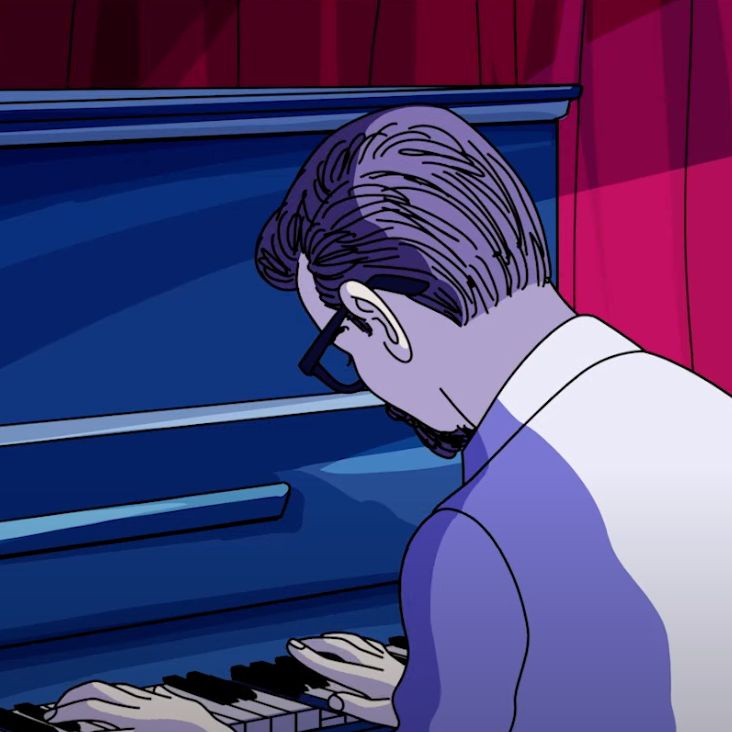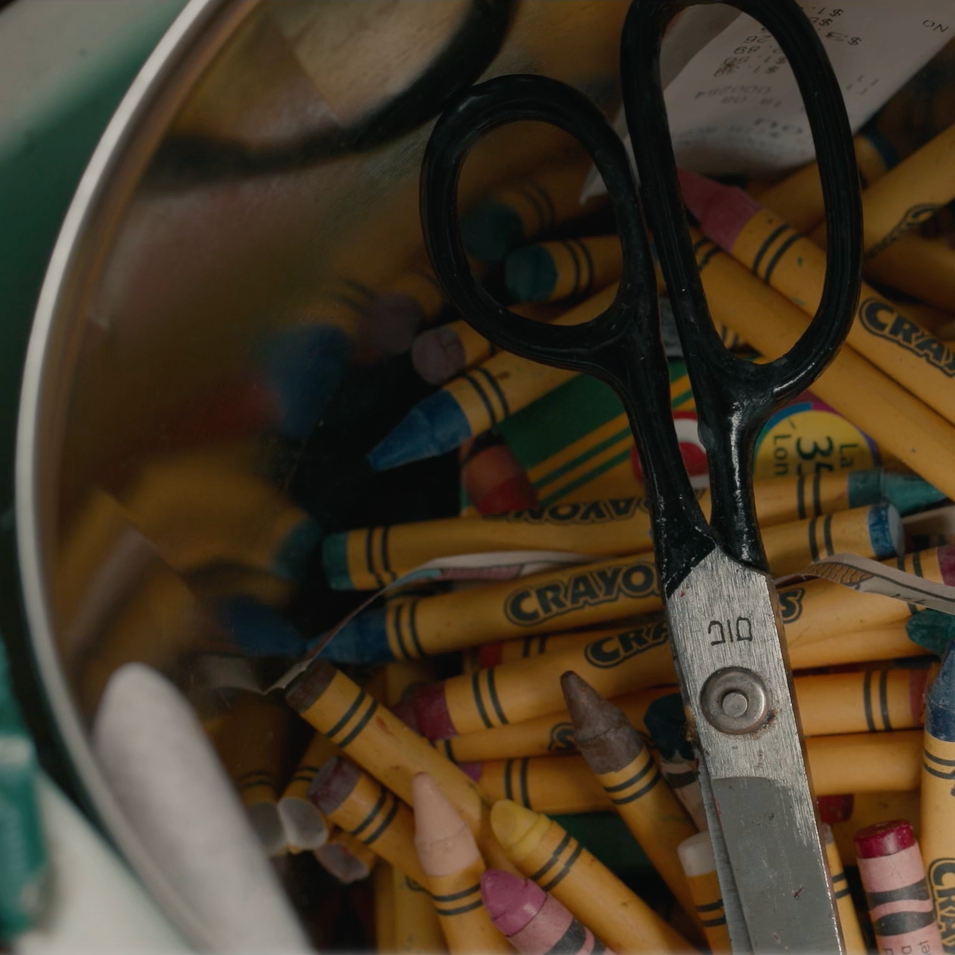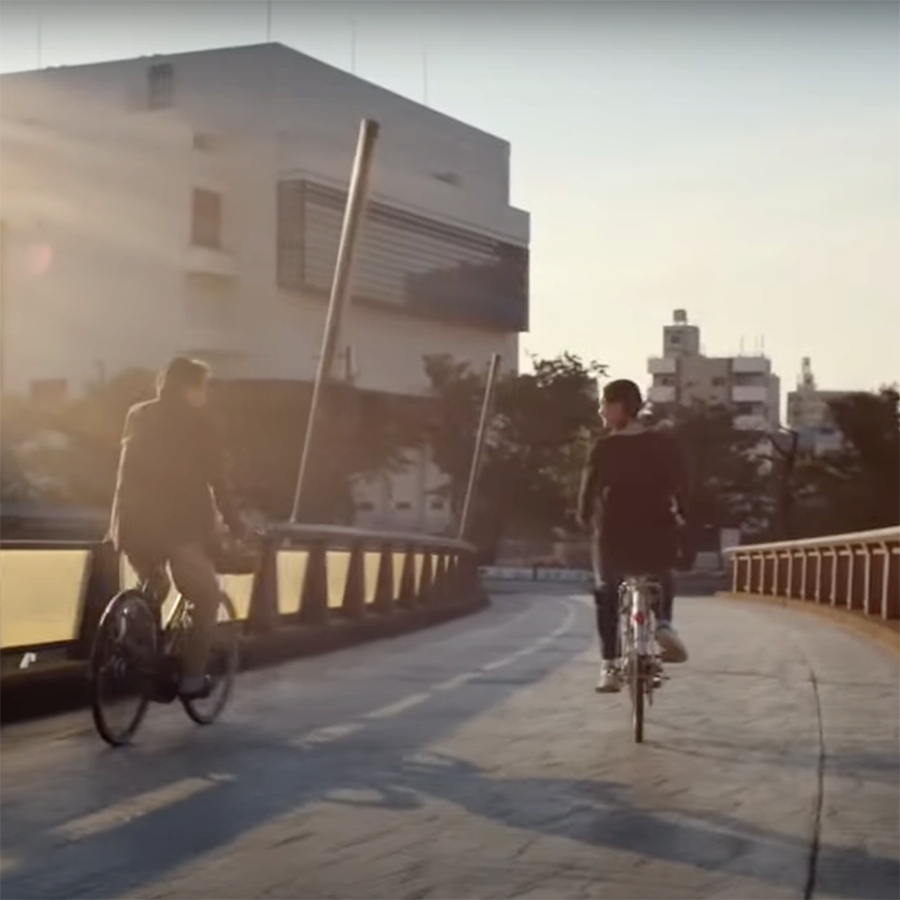
February 19, 2010
What Am I Doing Here? Tall Buildings and High Anxiety in Las Vegas

A weakness of much architectural criticism is that it is, by nature and necessity, formalist. A critic looks at a work in its opening week — if not before — forms an opinion on its aesthetics and takes a guess as to how it will function. There is utility to this practice: we all want to hear about the next new thing, and we want to hear about it right now. But it’s also deceptive; so many of architecture’s qualities reveal themselves over time and through prolonged experience. Visiting a place is vastly different from living in a place. Our perceptions of something new will gradually change as we learn to live with it, as we see how it operates and as our behavior changes along with it. The departed World Trade Center, if nothing else, serves as an indelible reminder of just how vastly our ideas about buildings evolve over time.Â

DAY 1
3:30 PM: Picked up at McCarron airport by one of CityCenter’s stretch limousines. It is silver and powered by natural gas. Can there be such a thing as a “green” fleet of stretch limos? Welcome to Las Vegas.Â
11:00 PM: One suspects that occupancy rates are low, but the casino floor is jumping on a school night. There’s a rumor circulating, almost certainly apocryphal, that a Japanese businessman has dropped $89 million in the casino. Meanwhile, a fellow journalist and former professional gambler has taken the place for $250. In a most unlikely turn of events, I actually feel sympathy for a casino.
11:30 PM: Hmm. The taps in my sinks (you get two in each room) are coughing like the fish fountain in Tati’s Mon Oncle. All electronics in the room are digital interfaces, a system that’s a bit too sophisticated for its own good. Did I just set my alarm for 7:30? Not sure.

DAY 2
7:30 AM: Alarm works.Â
8:00 AM: Alas, breakfast with an old college roommate is off. He’s a recent transplant to Vegas from Buffalo, but out of town on business. I’m interested in his experience of these two places on opposite ends of the American urban spectrum, one a frigid industrial city with its best years behind it, the other a rapidly expanding desert metropolis built on an economy of dreams.Â
9:00 AM: Managed to cross the Strip via pedestrian bridge to get the wide view of the complex. CityCenter is what you might call Post-Metaphor Las Vegas. Cosmetically, its buildings are not simulacra of buildings from other places and times — Rome, Paris, New York, Venice, Medieval England. Nor does it seem like “Sin City.” It’s not seedy. It’s more khaki pants than sharkskin suit. Which begs this question, at least for me: What’s the point of CityCenter if it’s just an upscale development in a mid-size American city, six hours from New York?
9:15 AM: How big is CityCenter? The Harmon, at 25 stories, is the “boutique” hotel on the lot. And it was planned to be considerably taller. Differentiating between the hotels — the Aria, the Vdara, the Mandarin Oriental — is difficult. They all look vaguely similar (towers of reflective glass), with vaguely similar amenities.Â
9:45 AM: Building heights on the Strip are determined by the “cone of approach” air corridor to nearby McCarron Airport. This is the opposite of zoning in most cities, where building heights are stepped back from the ground up. In Vegas, it happens from above. A bit of investigation reveals this to be a fairly contentious legal issue. Does the airport’s appropriation of aerial space constitute an unconstitutional taking of property rights? Let’s leave that to the lawyers, and our friends at Bldgblog.
10:00 AM: Principal architect Francisco Gonzalez leads a tour of Murphy/Jahn’s Veer Towers. They lean at 5 degrees, hence the name. Actually, it’s not a tour: the buildings are not yet open. A few journalists and the PR team mill around on the access road in front of the buildings, which are easily the best things about CityCenter. They are at once robust and delicate. There’s no reflective glass. This is unheard of in Vegas, and was a major concession won by Gonzalez. Staggered panels of clear and fritted yellow glass animate the facades and give the complex a welcome shot of color. Horizontal louvers (Gonzalez calls them “fins”) give shade from the desert sun. Most of the condo units are sold. Whether anyone will actually use them or if they’re simply investment properties is another question.
11:00 AM: After the tour, Gonzalez and I take a walk around Crystals, Libeskind’s shopping mall, which is adjacent to the Veer Towers and shares some of their support structure. Gonzalez wears a leather coat and has a disarming Spanish accent that belies a bulldog personality. “I was hated here but I got everything I wanted. I don’t think Libeskind pushed hard enough. He got a mall. I think he was happy with that. I came in with my crazy English and I pushed very hard.” I have a difficult time believing anyone hated him. He is sincere, free of pretense, sharp. A reflection of his work. Libeskind, clearly, was impressed. The two are collaborating on a major development project in East Asia.
11:55 AM: With the exception of a branded Assouline shop in Crystals, there is no bookstore on the strip. There was a Borders at the Mandalay Bay, but it closed. Also, the fountains at the Bellagio don’t start until 3 PM. Learned that the hard way.
12:30 PM: Lunch at American Fish, chef Michael Mina’s seafood restaurant at Aria. Fine dining is structured as a major component of CityCenter’s appeal, and there are restaurants helmed by star chefs studded throughout the complex. The food at this one is especially good, and I don’t even like seafood. The décor? Comfortable. Every restaurant here looks essentially the same, in a contemporary but impersonal way. The servers are uniformly excellent, as if they’ve somehow internalized Danny Meyer’s philosophy of hospitality. Which begs a question. Are the servers outside of New York naturally nice? Does New York so jade its inhabitants that even our servers require a remedial course in professional behavior?
1:30 PM: Tour of Crystals, CityCenter’s signature work of starchitecture. A Libeskind minion tries his best to retroactively justify Libeskind’s idiosyncratic architectural language. “It’s a vortex drawing energy off the strip.” “It’s a lifelike spiral.” “Rocks.” “Fractals.” Please stop. Does it matter, anyway? From the outside, it’s dramatic and shiny. Inside, it’s a bit disappointing. The folds and cuts so prominent on the exterior suggest intriguing, Piranesian spaces, but upon entering one finds a fairly straightforward mall with some wonky ceilings and skylights. Shadows are projected on blank walls where you’d think the skylights would throw their own patterns. This seems like a failing. If you need projections to create visual drama, why all the structural gymnastics? Materially rich and visually sumptuous installations by David Rockwell — a teak stairwell, a blobby wooden catwalk — clash uncomfortably with Libeskind’s angular white-walled avant-gardism. Sculptures by WET, the firm behind the Bellagio fountains, are underwhelming, though still works-in-progress.Â
2:30 PM: Despite its flaws, it’s hard not to be won over by Crystals. It does have its dramatic moments, especially from the outside. It makes, at least by Vegas standards, considerable effort to engage its neighbors and the street. I’ve heard it said that its entire purpose is to occupy the wives of high-stakes gamblers, but this doesn’t seem especially fair. With his silly glasses and funny accent, Libeskind has made something of a cartoon of himself, which is a shame. As Lebbeus Woods recently noted, Libeskind’s experimental “Machines” of the 1980s are beautiful and complex metaphorical works that still have the power to inspire. I wish he’d look back at that work and quit it with the “spirals” and “vortexes” and “fractals.”Â
3:00 PM: Is there public space in Las Vegas without piped-in music?Â
5:00 PM: The absurdity of CityCenter’s urban gesture of separating its buildings now becomes apparent. The PR team has arranged for SUVs to take journalists from the Aria to the Mandarin Oriental for a cocktail party. The buildings are maybe 150 feet from each other.
5:30 PM: The lobby of the Mandarin Oriental smells like fancy soap, and the Sky Bar has panoramic views. But I start to feel claustrophobic and duck out of the event. For a certain type of person, Vegas is a non-stop party. For me, it induces a kind of persistent low-grade anxiety. There’s something dystopic about the place generally, and CityCenter is starting to feel like the world of Blade Runner come to life. I head back to my room, shut the black-out curtains and lie in bed. More people commit suicide in Las Vegas than in any other city in the United States.
7:30 PM: I like Karim Rashid. He has the courage of his convictions, even if I don’t share them, and he’s unafraid to appear slightly ridiculous in public. That said, Silk Road, his restaurant at the Vdara, is not a success, even on his terms. The blobby sofas in its bar area are uncomfortable and the decorative wave patterns on its walls looks like they were pulled from the lobby of a Marriott.
9:45 PM: Dinner at Silk Road has now entered its third hour, despite a paucity of customers. The mind wanders. Is the word vdara Spanish for “banal architectural experience”? Alas, no. It is the invention of the CityCenter marketing team, and has no meaning. Lesson learned. With due respect to Robert Venturi, Las Vegas is no longer a good place to look for meaning.
Â
10:00 PM: While we’re at it, the Silk Road isn’t a focused enough theme for a coherent menu. It’s too weak a thread to unite the cuisines of China, India, Persia and the Mediterranean. And because this is Vegas, the restaurant also has to double as a steak house — the Silk Road by way of Nebraska? — which makes no sense but says something about the clientele. The result: generic restaurant food.
10:45 PM: After dinner, journalists are invited to Eva Longoria Parker’s nightclub, Eve, in Crystals. I pass by on the way to the Bellagio fountains. Eva Longoria Parker is not in attendance. The women pretty much all wear sequined tube dresses hiked to mid-thigh. The men look unkempt. Not really my scene.
11:15 PM: Am I the only person not entranced by the Bellagio fountains? They’re visually impressive and a technological feat, fine, but it’s hard for me to enjoy anything accompanied by the schlocky music of Elton John.

9:00 AM. Along the long corridor leading to the convention hall, the entire Aria staff has lined up to cheer attendees of a large luxury travel conference, a much coveted “get” for the fledgling hotel. The media center is on the path, so I get the treatment. It’s nice to wake up to a standing ovation, but it feels silly and contrived.
9:15 AM: A tour of Aria with a pair of enthusiastic architects from Pelli’s New Haven office. Working hundred-hour weeks for several years running, they managed to design Aria, all 8 million square feet of it, without opening an office in Las Vegas. Can’t blame them.
9:20 AM: The enormous semicircular glass canopy that fronts the Aria is a bravura work of structural design, one of the highlights of the complex.
9:30 AM: Ditch the tour to head out to the Strip so I can buy a souvenir for my daughter. (A small stuffed animal in the Aria gift shop goes for $68.) Walk down to the New York New York complex, which has an air of squalid desperation. How it will survive with CityCenter and other new developments competing for business is beyond me. A friend quips that the only way they could fill the place is “if they reenact 9/11 every morning.” No comment.
9:45 AM: Worth noting that the fake New York has a dummy Whitney Museum (albeit with a crass theater marquee in place of Breuer’s bridge/awning assembly). I love the Whitney, but it’s odd that they’ve chosen it instead of the more famous Guggenheim facade. Did the Guggenheim’s aggressive legal team have something to do with this? I’ll bet.
12:45 PM: My stay is over. Another “sustainable” limo ride to the airport. The environmentally attuned strech limo is the operative metaphor for CityCenter.
10:30 PM: Back in New York, on the BQE, the city skyline visible on the horizon through the window of a Town Car. Lights are lights. But somehow these seem anchored, real, solid. The Vegas anomie finally begins to wane.

DAY 4
7:00 PM: Drinks at Prime Meats, in Brooklyn, with my wife. Realistically, this place is as much an artifice as anything on the Strip, a re-imagining of a 19th-century saloon, complete with polished bar, antique typography, Edison bulbs. Why, then, does it feel so much more honest? Because its aesthetic is filtered through a contemporary sensibility? Because it seems a natural part of a vibrant neighborhood? Is this all bullshit I invent to make myself feel more comfortable? Could the real problem with Las Vegas —
Observed
View all
Observed
By Mark Lamster
Recent Posts
Why scaling back on equity is more than risky — it’s economically irresponsible Beauty queenpin: ‘Deli Boys’ makeup head Nesrin Ismail on cosmetics as masks and mirrors Compassionate Design, Career Advice and Leaving 18F with Designer Ethan Marcotte Mine the $3.1T gap: Workplace gender equity is a growth imperative in an era of uncertainty



